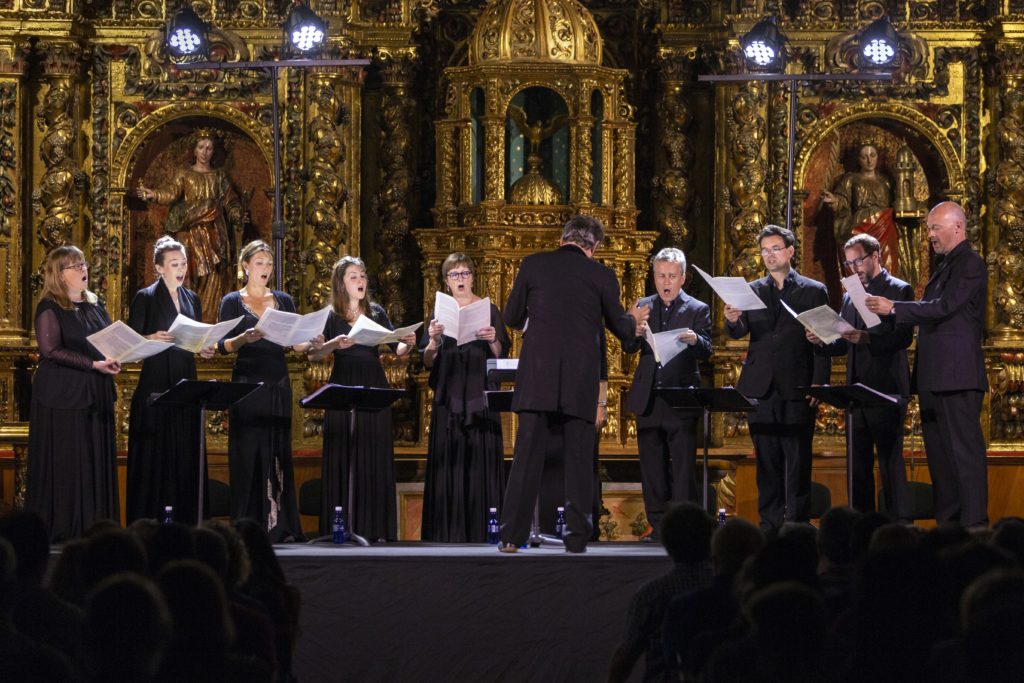
Beverley & East Riding Early Music Festival: The Ministers Of Pastime/Tallis Scholars, St Mary’s Church, Beverley, May 27 & Beverley Minster, May 28
IT is a feather in our region’s cap when a foreign ensemble agrees to make its British debut here. The latest to be lured are The Ministers Of Pastime, headlining at the ever-charming Beverley Early Music Festival.
A group of nine players from Catalonia, they take their name from an observation by a French ambassador at the court of Henry VIII.
But Vienna was their focus here, specifically the Italian-inspired music that thrived there in the first half of the 17th century. Three kapellmeisters (directors of music) at the Viennese court pioneered the development of the stylus phantasticus. The earliest of them was Giovanni Valentini, a Venetian who had migrated to Austria in 1614, joining the court of Archduke Ferdinand in Graz.
With the latter’s election as Holy Roman Emperor, he moved to Vienna, where he promulgated this new Venetian and northern Italian operatic style after becoming Hofkapellmeister in 1626.
Although it is based around daring harmonic and rhythmic devices that are marked by sudden and often unprepared changes, it is equally important as a style of performance that is dramatic, expressive and, indeed, operatic, although it is essentially instrumental and not vocal.
After Valentini’s death, his lead was taken up in turn by Antonio Bertali, a native of Verona, and then by an Austrian, Johann Schmelzer (who may have taught Biber).
The programme at St Mary’s was framed by Schmelzer sonatas, with the two Italians sandwiched between. It emerged that all three composers laid much stress on the lead violin and Ignacio Ramal’s virtuosity was tailor-made for the role, as he and his co-violinist, Sara Balasch, swayed from the knees with an abandon that was reflected in their playing.
Right from the start there was a surprising amount of syncopation, but the ensemble never wavered, with forthright accents tautly synchronised. A second Valentini sonata, nicknamed “Enharmonica”, was more lyrical, but in all three of his works here there was always strong momentum. A similar bonhomie coloured a chaconne and two sonatas by Bertali, the latter two linked by an eloquent archlute solo.
Schmelzer clearly learnt from the Italians. His rhapsodic Sonata Jucunda, packed with volatile time-changes, featured a powerful central unison followed by a drone and some gypsy-style dancing – all the sunny temperament of the Mediterranean in fact.

The appearance of the Tallis Scholars in a packed Beverley Minster not only commemorated the 400th anniversary of the death of William Byrd but also celebrated the 50th anniversary of the Scholars themselves, still conducted by Peter Phillips who founded them during his 20th year.
Six motets by Byrd himself were heard alongside four by Tallis and one by Sheppard, both of whom were in full flower when Byrd was born and were effectively his mentors. A setting of the same text, O Salutaris Hostia, showed Tallis writing in five parts with wonderful clarity, his inner voices particularly transparent, whereas the younger Byrd demonstrated his confidence by changing harmonies more wildly and finding satisfying resolution to dissonance.
The centrepiece of the evening was the only piece sung in English, indeed probably the longest that Tallis wrote for the Anglican service, his Te Deum ‘for means’, which uses words from the 1549 psalter. The ensemble revelled in its antiphonal techniques so that they positively sparkled.
It was followed by Byrd’s equally inspirational Quomodo Cantabimus? in eight parts, effectively a lament for the exile of Catholicism based on Psalm 137. Sheppard’s three-section Jesu Salvator Saeculi Redemptis, with its plainsong intros, spare harmonies and imaginative Amen, completed this succulent demonstration of the power of these three great composers.
There was plenty of treasure still in store: skilfully sustained lines in Tallis’s Miserere Nostri, a magical ending to Byrd’s Miserere Mei and stunning manipulation of textures and polyphony in the final piece, Byrd’s masterly Tribue Domine. The ‘false relation’ (deliberate dissonance) at the end of Tallis’s hymn O Nata Lux, given as an encore, was delightfully attenuated, yet another example of Phillips’s artistry with this unique group.
Review by Martin Dreyer
